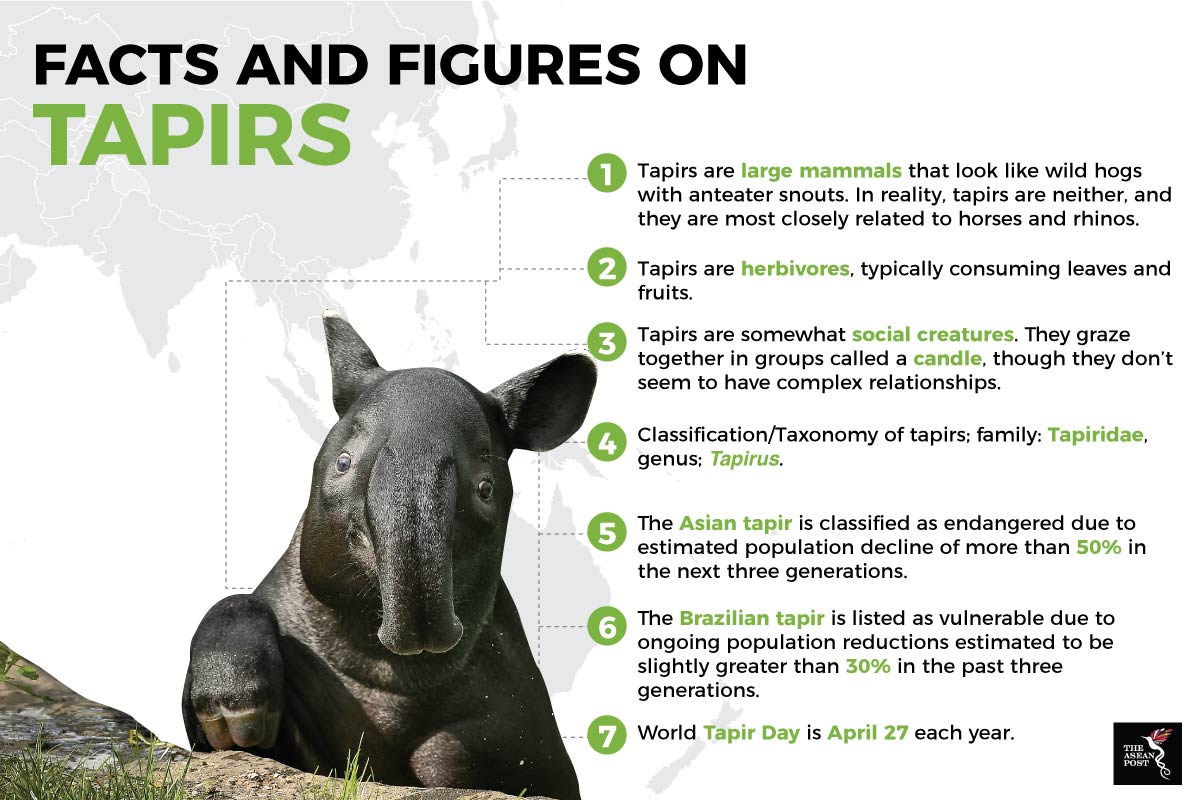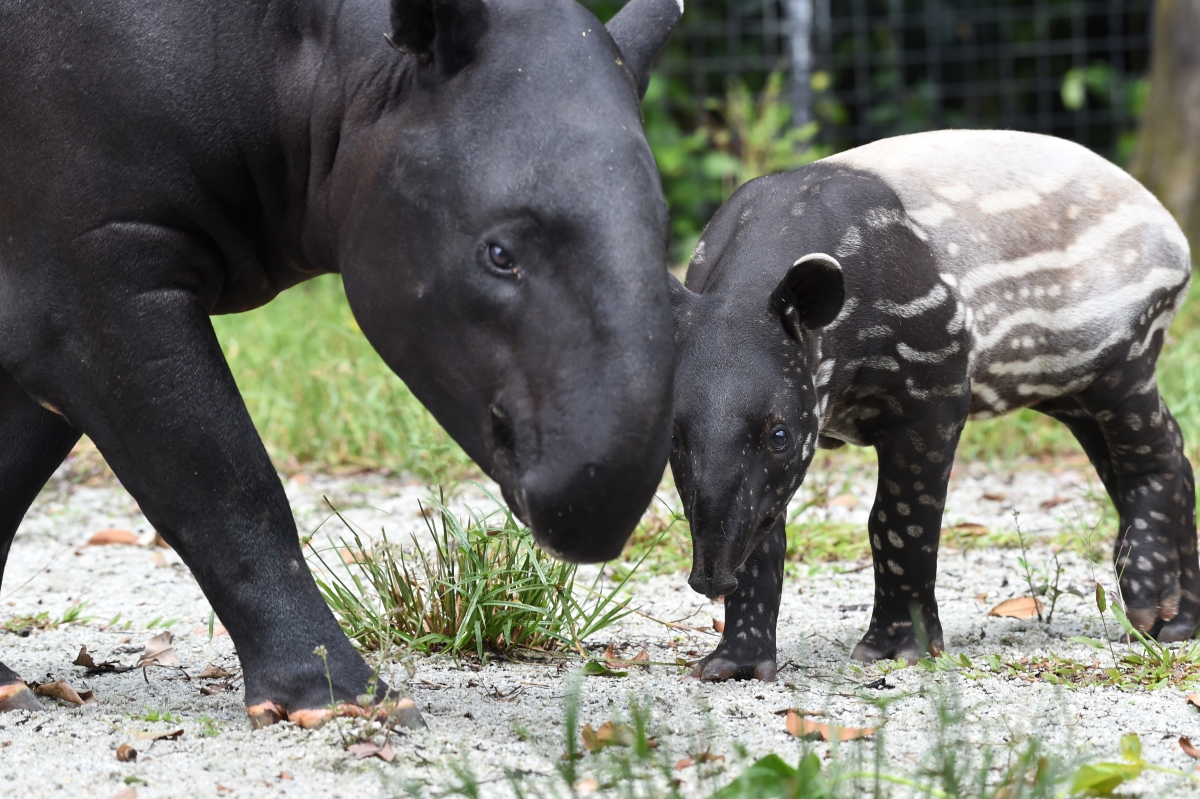Malaysia is blessed with rainforests that play host to some of the most diverse tropical ecosystems in the world. Estimated to be approximately 130 million years and older than the Amazon, Malaysia’s Taman Negara takes top spot as the world’s oldest rainforest. The country’s rainforests are an abode to a plethora of flora and fauna, a home for numerous unique mammals and species of birds. Among the fauna that inhabit these lush rainforests include Malayan tigers, Proboscis monkeys, orangutans, hornbills, and the ever-elusive Malayan tapir. Most of these magnificent creatures are threatened by human activity as their habitats are destroyed as a result of expansion and irresponsible development projects.
The tapir is an animal that is often misunderstood. There are four species of tapir across the globe; the Lowland, Baird’s, Mountain, and Malayan. All species are relatively similar in stature. Tapirs range from 74 to 107 centimetres from foot to shoulder and weigh a hefty 227 to 363 kilograms. Considering its height and mass, the Malayan tapir (Tapirus indicus) is the largest species, weighing up to 363 kilograms. This specific species is found mostly in Peninsular Malaysia besides parts of Thailand and Sumatra, Indonesia.
According to the International Union for Conservation of Nature (IUCN) Species Survival Commission, tapirs have a relatively long gestation period of 13 months and only give birth to one offspring (known as calves) at a time.

Source: Live Science
Spot of bother
Due to overzealous deforestation and overhunting by humans, all four-known species of tapir are on the WWF vulnerable list (classified by the IUCN Red List of Threatened Species). Added to the aforementioned threats are illegal logging and an incessant encroachment into protected park areas by subsistence farmers. It is disheartening to point out that there are currently less than 1,500 tapirs in Peninsular Malaysia (based on records by Malaysia’s Wildlife and National Parks Department; Perhilitan).
Another reason as to why the number of Malayan tapirs has dwindled is that these animals are often victims of road accidents. It is not uncommon for Malaysian roads to cut across foraging areas, resulting in local wildlife having to cross roads in a desperate search for food. These incidents tend to happen late at night or early in the morning when visibility is relatively low.
The Malayan tapir has a light coloured-patch that extends from its shoulders to the rear end of its black body, which is to help it escape predators by means of camouflage. However, this natural camouflage has sadly backfired as it makes it difficult for motorists to spot these creatures at night and on foggy mornings. Accidents usually happen because motorists lack cognisance to decelerate their vehicles, especially when approaching areas where wildlife normally exit the forest cover to cross the road.
According to Assistant Senior Director of Perhilitan’s Biodiversity Conservation Division (Tapir), Muhamad Bokhari Fadzin, the tapir’s habitat is often ‘split into half’ due to the construction of roads and highways. In Peninsular Malaysia alone, 73 tapirs have been killed in road accidents along 61 road and highway networks between 2010 and 2017 (Perhilitan records). In addition to external threats, a contributing factor to the declining population of Malayan tapirs is their slow reproductive rates.
On a positive note, there are higher numbers of Malayan tapirs in the forest reserves of Negeri Sembilan, a state located approximately 54 kilometres south of Kuala Lumpur, the capital city of Malaysia. The Jelebu, Kenaboi, Senaling Inas, and Ulu Bendu forest reserves are among the locations that have high populations of these magnificent animals.
“Perhilitan has always been strict in its enforcement duties to ensure the tapir population is stable despite the threat of poachers and road accidents,” said Bokhari in a recent interview. He added that the tapir is protected under the Wildlife Conservation Act of 2010.
The tapir should not have to share a similar fate to that of the dodo and Tasmanian tiger in Australia. A concerted effort by both, the authorities and the general public can alleviate the plight of these relatively shy animals, which some would argue to be the most iconic animal in Malaysia after the Malayan tiger and orangutan. Education on wildlife conservation is of paramount importance too. It ought to be incorporated into the education systems of countries across the region as it is the future generations of Southeast Asia that will determine the survival or extinction of the region’s diverse wildlife.
